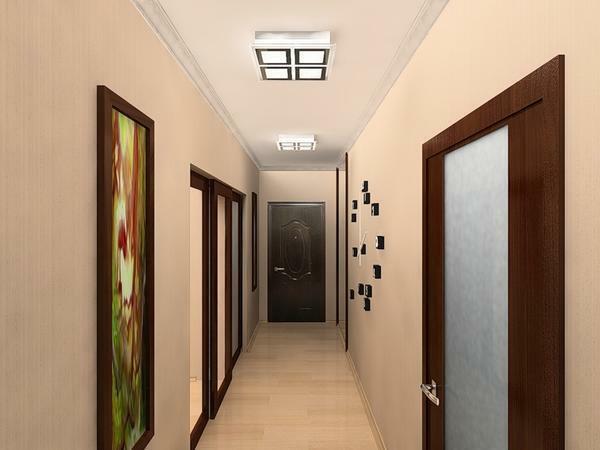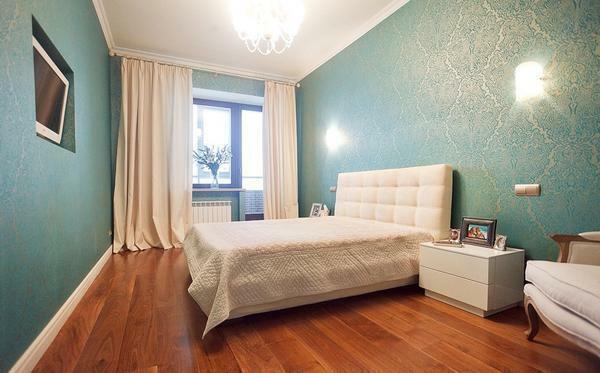Contents
- 1 What are the water-dispersed paints and their types
- 2 The technology of painting walls with water-based paint
It is difficult to imagine high-quality modern repair without the use of high-tech materials, and the paints to which special requirements are required are no exception. Among them are water-based paints, in which the dispersing element is the coloring pigments and the binding component.
After the surface is dry, the cured polymer film forms on it, which protects the walls and ceiling from the harmful effects of moisture. In addition, water-based paint is considered an environmentally friendly material and does not emit harmful toxins.
Painting walls with water-based paint with your own hands is quite fascinating and interesting process. Before you start choosing paint materials, you should familiarize yourself with some of the characteristics and characteristics of paints, their types and in what cases they are used.
Water-based paints have a number of characteristics:
- Absence of sharp odors and vapors. Absolutely harmless to the body, and you can perform paint work for a long time.
- It dries very quickly and makes the surface beautiful and attractive.
- Thanks to special dyes, you can paint any colors and shades.
- The process of coloring surfaces with water-based paints is not particularly difficult, besides all the working tools and devices are easily washed off with running water.
- Paint is very economical. Its approximate consumption is 1L.on 7m.kv.
What are the water-dispersed paints and their types
Water-based paints, because of the peculiarity of their composition, are also called water-dispersive paints. Depending on the polymer components, water-based paints are divided into the following types:
Water-based paints, which basically contain an aqueous solution of colorants and liquid glass, are called silicate paints. Their characteristic feature is resistance to environmental influences, and they are also gas-tight.
The painted surface retains an attractive appearance for quite a long period of time, besides the paint on it can last for several decades. When working with silicate paints, it is necessary to follow the manufacturer's recommendations for their application, as they contain alkalis in their composition.
Silicone water-based paints are used for painting reinforced concrete products, brick structures and building facades, which require special moisture-proof treatment.
For finishing interior and exterior works on concrete and walls from various types of bricks, use water-emulsion mineral paint. It is made on a cement basis or with the addition of hydrated lime. Painting of walls with water-based paint based on mineral components can be carried out in conditions of high humidity. It perfectly protects the wall surfaces from the aggressive influence of external factors, however, its duration is not long.
Painting walls with water-based paint based on polyvinyl acetate emulsion has certain advantages. They consist in the fact that such a paint can be diluted with water and work with it in an unventilated closed room. After drying, a high-strength film is formed, which is resistant to direct sunlight, moisture and various fats, including mineral oils. Often used for repair in production workshops and auto repair shops.
Special attention should be paid to acrylic water-based paints, which are very popular. In their production, acrylic resins are used, which give the dried surface a special strength and elasticity. Among other types of paint, acrylics are the most expensive, however, they have a high level of quality.
There are cheaper options, for example, such as vinylacrylic or acrylic silicone paints, but their quality and physical properties are somewhat worse. The most expensive are acrylic paints, which have a latex base. The dried up painted surface can be washed as much as necessary, and it will not lose its appearance for a very long time.
Sometimes, careful preparation of walls for painting with latex-based water-based paint is not at all necessary. This applies to almost ideal surfaces with small cracks that will disappear without a trace after applying such a paint.

A distinctive feature of acrylic water-based paints is their low gas permeability. In this regard, they are recommended for painting reinforced concrete structures, because they prevent corrosion and premature spoilage.
No less popular are silicone water-based paints, which are based on the water dispersion of resins. They have excellent vapor permeability, and water repellent effect. In addition to reinforced concrete suitable for all types of surfaces, even in rooms with high humidity( bath or kitchen).In addition, they are easily combined with many types of paints, which is very convenient for finishing works.
Silicone paints are highly elastic. This property can be used to hide joints and cracks on the surface of walls with a depth of several mm. Also due to its composition, on the surfaces stained with silicone paints do not multiply various microorganisms. Therefore, the appearance of mold and fungus in the house are excluded. Calculate how much paint you need, help the online ink flow calculator.
Technology of painting walls with water-based paint
Before using water-based paint, it must be diluted. This can be done with water or a solvent, however, in any case, the solvent must comply with the manufacturer's recommendations, which can be found on the packaging label. Before painting directly, you need to mix the paint and bring it to a homogeneous consistency. You can buy the usual white paint and colors to it with the necessary shade, and then carefully mix and get the desired tone at the output.
On the question of how to prepare the walls for painting with water-based paint, in short you can answer in the following way. In the beginning, the walls are cleaned of the remnants of wallpaper, old plaster and paint, leveled, primed, then cleanly shpakkuyutsya and polished. Sanding the walls and ceiling are brought to an ideal state, so that they are smooth and smooth. After that, the walls are primed with a compound for deep impregnation. When the surface dries, you can start painting.
Painting of walls with water-based paint, whose design can be thought through independently, should be carried out using a special painting tool. To do this, you need to select a good roller, spray gun or brush, as well as various trays and containers for paint. Layers of paint should be applied in parallel strips and not allow "bald spots" and abundant layers. The next layer should be applied perpendicular to the previous one. The same technology should be adhered to when painting the ceiling, making sure that the layers of paint are applied evenly.


